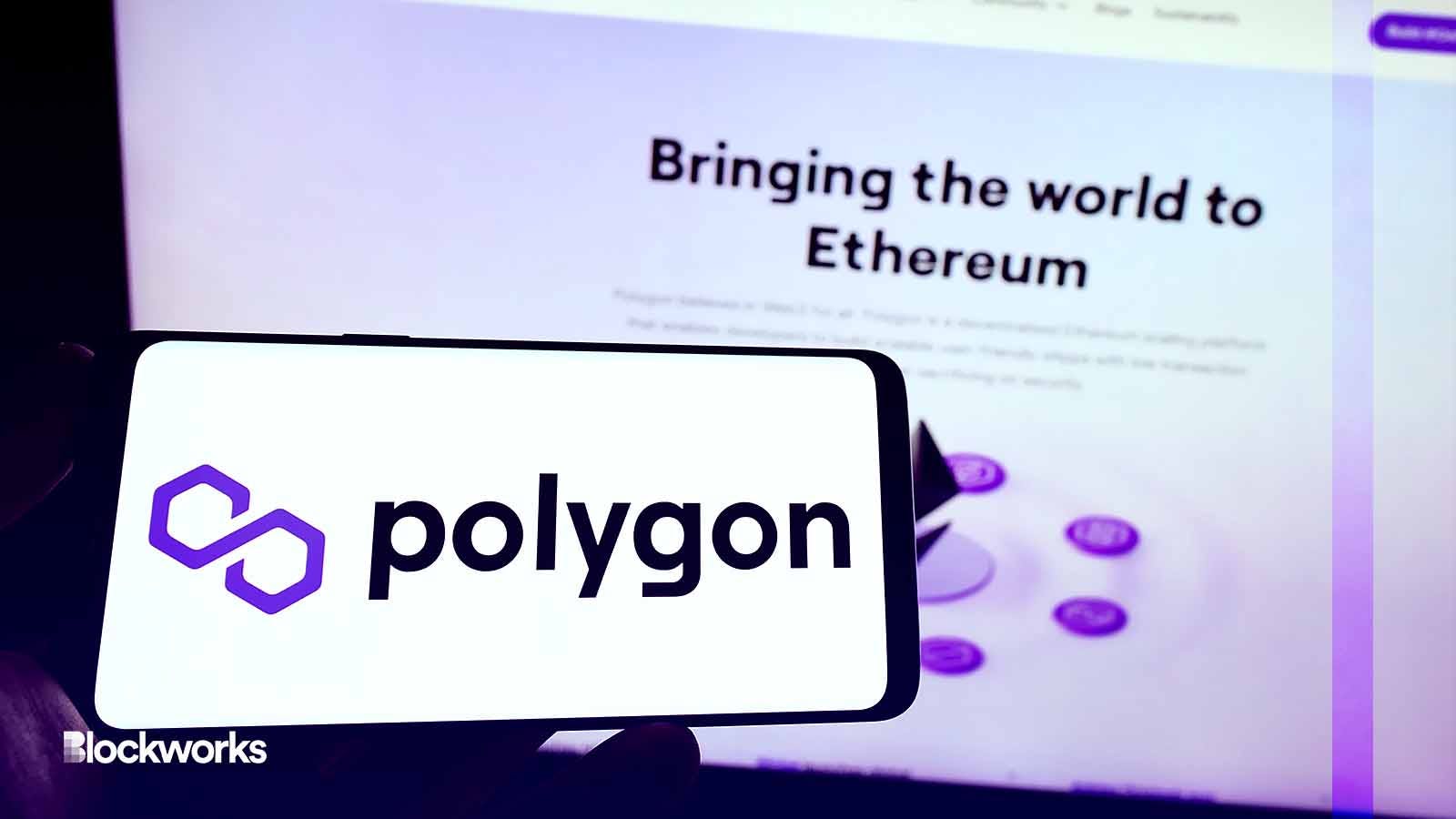Not so optimistic? Polygon 2.0 is all about zero-proofs
While optimistic rollups rely on “socioeconomic games,” Nailwal says, zero knowledge proofs instead rely on mathematics

T. Schneider/Shutterstock modified by Blockworks
The path to Polygon 2.0 is well underway, with architectural improvements, changes to governance and token updates in the works. But Polygon co-founder Sandeep Nailwal says all the upgrades, ultimately, will hinge on the implementation of zero knowledge (ZK) technology.
Nailwal says the current bevy of optimistic rollups are really nothing more than stop-gap measures acting as “midterm” solutions.
“Every researcher in this industry knows that and understands that ZK is the end-game for all of this,” Nailwal tells Blockworks on the Empire podcast (Spotify/Apple).
An optimistic layer-2 rollup, such as Optimism or Arbitrum, performs computations in “an off-chain environment,” Nailwal explains. Problem being, he says, is that “you want to prove this computation completely on Ethereum, and you want to make sure that if the users stop trusting this [layer-2] chain, they can exit” to the layer-1 chain. Because of this, he says, “you still have to provide all the data back to Ethereum.”
Read more: Polygon 2.0 is crypto’s ‘most relevant technical announcement’: FalconX
Optimistic rollups are a fairly simple technology, Nailwal says, where it is presumed that layer-2 chains are operating accurately and honestly, hence the term “optimistic.” In the case of incorrect or fraudulent activity, a fraud proof can be initiated during a delay period.
That delay period can take several days of community vigilance.
“All the transactions are happening on layer-2,” Nailwal explains. “You put all the data back on Ethereum, and you put all the proofs back on Ethereum.” Because it all eventually settles on Ethereum, costs for optimistic rollups are still relatively high, according to Nailwal.
The internet has scaled the same way
Zero knowledge takes a different approach, instead using a more efficient “constant size proof” that takes the same amount of computation to verify transactions.
“Let’s say you are that chain,” Nailwal says, “and you executed a hundred thousand transactions. You don’t need to give me the data of those hundred thousand transactions.”
Only a ZK proof is required, he explains, proving changes from the previous state to the current state of data. “The moment I verify, I am a hundred percent sure that everything you did is correct. So you can already imagine the amount of scale you can achieve.”
“With ZK rollups, you don’t even need to put the data back on Ethereum,” he adds.
While optimistic rollups rely on “socioeconomic games,” Nailwal says, zero knowledge proofs instead rely on mathematics. Not only does checking for fraud on an optimistic rollup take time, but it also requires a hefty investment, Nailwal adds.
Running a single node to check for fraud on a layer-2 chain might cost around $5,000 a month, he says. “Now imagine you have 10 optimistic chains.” Costs can add up quickly if a community wants to run a larger number of nodes to ensure decentralization, he says. “Hence, those socioeconomic proofs do not scale.” In the case of ZK proofs, Nailwal says, “you can have millions and millions of chains.”
Not only do ZK proofs enable “infinite scalability” with thousands of chains only having to send proofs to Ethereum, they also allow for “unified liquidity,” Nailwal says. An LX-LY bridge will allow funds to move between layer-2 chains without ever settling on Ethereum. “All these chains become interoperable at a time scale of 2 to 10 seconds,” he says.
The vast array of chains would then start to feel like a single block space, Nailwal says. “And if you actually look back, you will see the internet has also scaled in the same way.”
Get the news in your inbox. Explore Blockworks newsletters:
- The Breakdown: Decoding crypto and the markets. Daily.
- 0xResearch: Alpha in your inbox. Think like an analyst.






